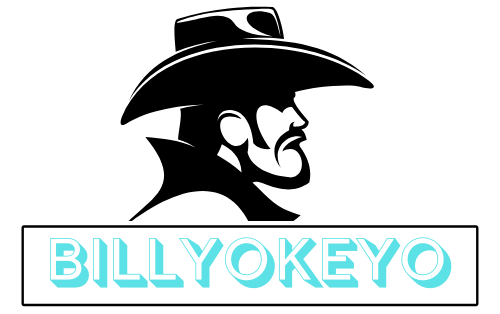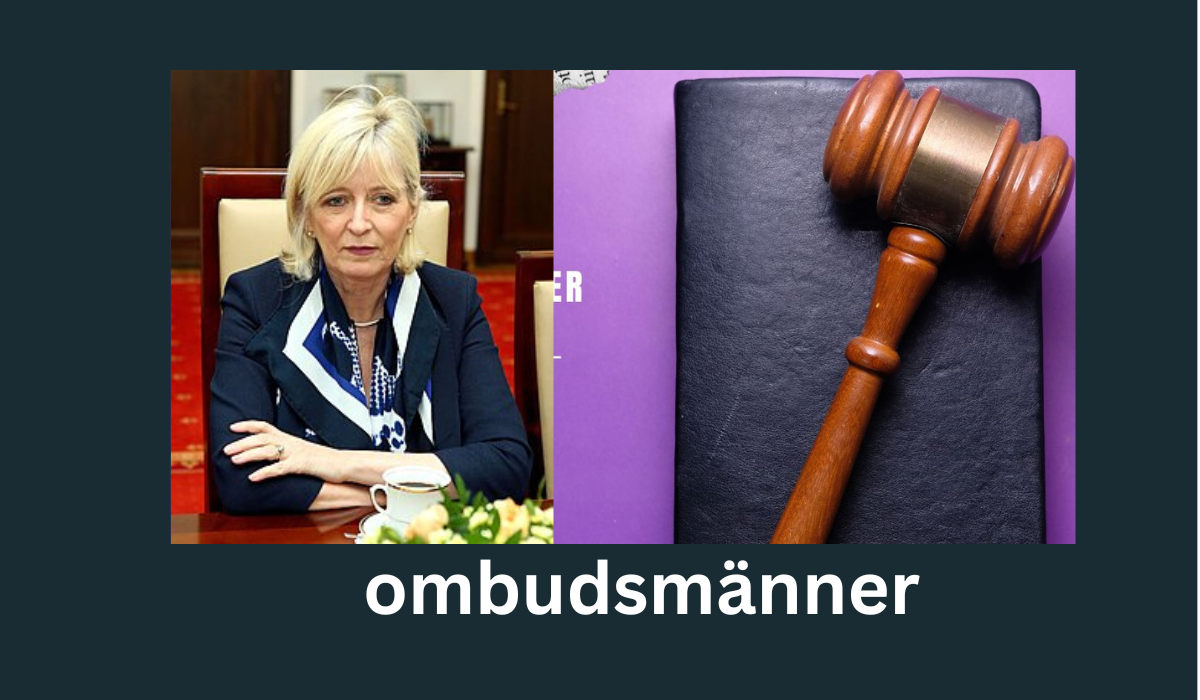When disputes arise between individuals and organizations, finding a fair resolution can feel impossible. Power imbalances, complex bureaucracies, and conflicting interests often leave people feeling unheard and frustrated. This is where ombudsmänner step in—independent advocates who bridge the gap between complainants and institutions to ensure fair treatment for all parties involved.
An ombudsman (the singular form of ombudsmänner) serves as a neutral mediator who investigates complaints against organizations, government agencies, or service providers. These professionals operate independently, without allegiance to either side, making them uniquely positioned to resolve disputes fairly and efficiently.
The role of ombudsmänner has expanded dramatically over the past century. What began as a Swedish government innovation has evolved into a global network of advocates working across numerous sectors—from healthcare and banking to telecommunications and insurance. Their presence signals an organization’s commitment to accountability and customer satisfaction.
This comprehensive guide explores everything you need to know about ombudsmänner: their history, functions, types, benefits, and the challenges they face. Whether you’re a consumer seeking resolution to a complaint or an organization considering establishing an ombudsman program, understanding these independent advocates is essential for navigating our increasingly complex world.
History and Evolution
The concept of ombudsmänner originated in Sweden in 1809, when the Swedish Parliament established the position of “Justitieombudsman” to oversee government administration. The Swedish word “ombudsman” literally translates to “representative” or “agent,” reflecting the role’s fundamental purpose of representing citizens’ interests against potential government overreach.
Finland followed Sweden’s lead in 1920, establishing its own parliamentary ombudsman system. However, the concept remained largely confined to Scandinavia for the next several decades. The real expansion began after World War II, as democratic nations sought new ways to ensure government accountability and protect citizens’ rights.
Denmark established its ombudsman office in 1955, followed by Norway in 1962. The concept then spread beyond Scandinavia, with New Zealand becoming the first English-speaking country to adopt an ombudsman system in 1962. The United Kingdom established its Parliamentary Commissioner for Administration in 1967, while Australia created its Commonwealth Ombudsman in 1977.
The evolution of ombudsmänner accelerated in the 1970s and 1980s as the concept expanded beyond government oversight. Private sector organizations began establishing their own ombudsman programs to handle customer complaints and internal disputes. This shift marked a crucial development—ombudsmänner were no longer exclusively focused on government accountability but became tools for improving organizational performance across all sectors.
The digital age has brought new challenges and opportunities for ombudsmänner. Online complaint systems, social media monitoring, and data analytics have transformed how these advocates identify, investigate, and resolve disputes. Many ombudsman offices now offer multiple channels for filing complaints, including mobile apps and virtual consultations.
Functions and Responsibilities
Ombudsmänner serve several critical functions that distinguish them from traditional complaint-handling mechanisms. Their primary responsibility involves investigating complaints impartially, without bias toward either the complainant or the organization in question. This neutrality is fundamental to their effectiveness and credibility.
The investigation process typically begins when someone files a complaint alleging unfair treatment, poor service, or administrative errors. The ombudsman reviews the complaint to determine whether it falls within their jurisdiction. If accepted, they gather relevant information from all parties involved, including documents, witness statements, and expert opinions when necessary.
Unlike courts or regulatory agencies, ombudsmänner focus on finding practical solutions rather than assigning blame or imposing penalties. They examine whether proper procedures were followed, whether decisions were reasonable, and whether the complainant was treated fairly. This approach often leads to faster, less adversarial resolutions that preserve relationships between parties.
Mediation represents another crucial function of ombudsmänner. They facilitate discussions between disputants, helping them understand each other’s perspectives and work toward mutually acceptable solutions. This collaborative approach often uncovers underlying issues that formal legal proceedings might miss.
Beyond individual case resolution, ombudsmänner identify systemic problems within organizations. By analyzing complaint patterns and trends, they can recommend policy changes, procedure improvements, and training programs that prevent future disputes. This systemic impact often proves more valuable than resolving individual complaints.
Many ombudsmänner also serve educational roles, helping organizations understand best practices for complaint handling and customer service. They may conduct training sessions, develop guidelines, and share anonymized case studies that illustrate common problems and effective solutions.
Types of Ombudsmen
The ombudsman model has adapted to serve various sectors and contexts, resulting in several distinct types of ombudsmänner. Understanding these different categories helps clarify which ombudsman might be appropriate for specific situations.
Parliamentary or Public Sector Ombudsmen represent the original model, focusing on government administration and public services. These ombudsmänner investigate complaints against government agencies, departments, and officials. They typically have broad investigative powers and can access government documents and interview public servants. Examples include the Parliamentary and Health Service Ombudsman in the UK and the Commonwealth Ombudsman in Australia.
Industry-Specific Ombudsmen focus on particular sectors such as banking, insurance, telecommunications, or energy. These specialized advocates understand industry-specific regulations, practices, and common complaint types. The Financial Ombudsman Service in various countries exemplifies this model, handling disputes between consumers and financial service providers.
Organizational Ombudsmen work within specific institutions such as universities, hospitals, or corporations. They handle internal disputes involving employees, students, patients, or customers. These ombudsmänner often focus on preventing conflicts from escalating and maintaining positive organizational relationships.
News Media Ombudsmen address complaints about journalistic practices, editorial decisions, and media ethics. They serve as intermediaries between news organizations and their audiences, promoting accountability and transparency in journalism.
International Ombudsmen operate across national boundaries, addressing complaints involving international organizations, multinational corporations, or cross-border disputes. The European Ombudsman, which investigates complaints against EU institutions, represents a prominent example of this category.
Each type of ombudsman operates under different frameworks, with varying powers and procedures. Some can issue binding decisions, while others can only make recommendations. Understanding these differences helps set appropriate expectations when engaging with ombudsmänner.
Benefits of Having an Ombudsman
The presence of ombudsmänner creates significant benefits for consumers, organizations, and society as a whole. These advantages explain why the ombudsman model continues to expand across different sectors and countries.
For consumers and complainants, ombudsmänner provide accessible, free, and informal dispute resolution mechanisms. Unlike court proceedings, which can be expensive, time-consuming, and intimidating, ombudsman processes are designed to be user-friendly. Most ombudsman offices accept complaints through multiple channels and don’t require legal representation.
The independence of ombudsmänner ensures fair treatment regardless of the complainant’s social status, economic position, or political connections. This neutrality is particularly valuable when dealing with large organizations or government agencies that might otherwise have overwhelming advantages in dispute situations.
Organizations benefit from ombudsman programs through improved customer relationships and enhanced reputation management. Rather than facing negative publicity from unresolved complaints, organizations can demonstrate their commitment to fairness through ombudsman partnerships. These programs also provide valuable feedback about operational problems and customer concerns.
The systemic recommendations generated by ombudsmänner often lead to significant organizational improvements. By identifying patterns in complaints, ombudsmänner help organizations address root causes rather than just symptoms. This proactive approach prevents future problems and reduces overall complaint volumes.
Society benefits from the transparency and accountability that ombudsmänner promote. Their annual reports and case studies provide insights into organizational performance and systemic issues affecting citizens. This information supports informed public discourse and policy development.
The ombudsman model also reduces pressure on formal legal systems by resolving disputes through alternative mechanisms. This efficiency benefits everyone by keeping courts available for cases that truly require judicial intervention.
Challenges and Limitations
Despite their many benefits, ombudsmänner face significant challenges that can limit their effectiveness. Understanding these limitations is crucial for setting realistic expectations and identifying areas for improvement.
Authority limitations represent perhaps the most significant challenge facing many ombudsmänner. While some can issue binding decisions, others can only make recommendations that organizations may choose to ignore. This limitation can frustrate complainants who expect definitive resolutions to their disputes.
Jurisdiction boundaries can create confusion about which ombudsman handles specific types of complaints. Overlapping jurisdictions or gaps in coverage may leave some complainants without appropriate recourse. Clear communication about scope and limitations is essential but not always achieved.
Resource constraints affect many ombudsman offices, particularly those handling large volumes of complaints with limited staff and budgets. These pressures can lead to delayed investigations, reduced quality of service, or inability to tackle complex systemic issues adequately.
Public awareness remains a persistent challenge. Many people who could benefit from ombudsman services remain unaware of their existence or unclear about how to access them. This knowledge gap particularly affects vulnerable populations who might benefit most from these services.
Organizational resistance sometimes undermines ombudsman effectiveness. Some organizations may view ombudsmänner as threats rather than partners, leading to limited cooperation during investigations or reluctance to implement recommendations.
The digital transformation presents both opportunities and challenges for ombudsmänner. While technology can improve accessibility and efficiency, it also creates new types of disputes and requires ongoing investment in systems and training.
Case Studies
Real-world examples demonstrate how ombudsmänner successfully resolve disputes and create positive change. These case studies illustrate the practical impact of ombudsman interventions across different sectors.
The Financial Ombudsman Service in the UK has handled numerous complex cases involving mis-sold financial products. One notable case involved a small business owner who was sold an inappropriate interest rate swap product by a major bank. The business owner complained that the bank failed to explain the risks properly and that the product was unsuitable for their needs. The ombudsman’s investigation revealed inadequate sales procedures and poor documentation. The resolution included compensation for losses and changes to the bank’s sales processes that benefited thousands of other customers.
A university ombudsman case involved a graduate student who complained about unfair treatment by a dissertation supervisor. The student alleged that the supervisor was unavailable for meetings, provided inadequate feedback, and created a hostile environment that delayed degree completion. The ombudsman’s investigation revealed systemic issues with faculty supervision training and support. The resolution included reassigning the student to a new supervisor, developing clearer supervision guidelines, and implementing regular training programs for faculty members.
The European Ombudsman successfully addressed a case involving access to environmental information held by EU institutions. Environmental groups complained that they were unable to obtain crucial data about chemical safety assessments. The ombudsman’s investigation found that the institutions were interpreting access rules too restrictively. The resolution led to revised guidelines that significantly improved public access to environmental information across all EU institutions.
These cases demonstrate how ombudsmänner can resolve individual disputes while creating broader positive changes that benefit many others facing similar situations.
The Future of Ombudsmen
The role of ombudsmänner continues to evolve in response to technological advances, changing social expectations, and emerging types of disputes. Several trends are shaping the future of these independent advocates.
Digital transformation is fundamentally changing how ombudsmänner operate. Artificial intelligence and machine learning technologies are beginning to assist with case classification, pattern recognition, and outcome prediction. These tools can help ombudsman offices handle larger case volumes more efficiently while identifying systemic issues more quickly.
Online dispute resolution platforms are expanding access to ombudsman services, particularly for people in remote areas or those with mobility limitations. Virtual hearings, digital evidence submission, and automated status updates are becoming standard features of modern ombudsman operations.
The growth of cross-border commerce and digital services is creating demand for international ombudsman mechanisms. Disputes involving multiple jurisdictions require new approaches to cooperation between ombudsmänner in different countries.
Social media and online reviews are changing how complaints are made and resolved. Ombudsmänner must adapt to handle complaints that begin on social platforms and may involve complex digital evidence. They also face pressure to resolve cases more quickly as public expectations for response times decrease.
Climate change and environmental concerns are creating new categories of complaints that ombudsmänner must address. Environmental ombudsmän and sustainability-focused complaint mechanisms are emerging to handle these specialized issues.
The COVID-19 pandemic has accelerated many of these trends while creating new challenges around remote service delivery and digital accessibility. Ombudsmänner who adapted quickly to remote operations maintained their effectiveness during lockdowns and restrictions.
Moving Forward with Ombudsmänner
Ombudsmänner represent a crucial component of fair and accountable societies. Their unique position as independent advocates enables them to resolve disputes, improve organizational performance, and protect individual rights in ways that traditional legal systems often cannot match.
The evolution from a single Swedish institution to a global network of specialized advocates demonstrates the universal need for accessible, impartial dispute resolution mechanisms. As organizations become more complex and citizen expectations for accountability continue to rise, the role of ombudsmänner becomes increasingly important.
The challenges facing ombudsmänner—limited authority, resource constraints, and awareness gaps—are not insurmountable. Continued investment in technology, training, and public education can address many of these limitations while preserving the core values of independence and impartiality that make ombudsmänner effective.
If you’re facing a dispute with an organization, government agency, or service provider, research whether an appropriate ombudsman can help. Most ombudsman services are free, accessible, and designed to be user-friendly. Even if your specific situation cannot be resolved through ombudsman intervention, the process of filing a complaint contributes to systemic improvements that benefit others.
For organizations considering establishing ombudsman programs, the investment in independent dispute resolution can yield significant returns through improved customer satisfaction, reduced legal costs, and enhanced reputation. The key is ensuring genuine independence and providing adequate resources for effective operation.
The future of ombudsmänner looks bright as technology expands their reach and effectiveness while new challenges create demand for their unique approach to dispute resolution. By understanding and supporting these independent advocates, we can all contribute to building more fair and accountable institutions.





